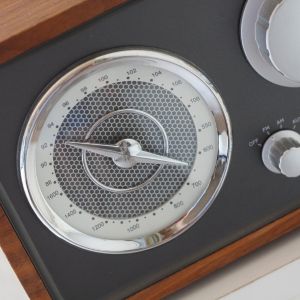
After former FEMA head Michael Brown spoke out in favor of AM’s necessary place in the dashboard, six major public safety groups are adding their names to the list of AM supporters. This June 5 letter came one day before the House Energy and Commerce Committee is holding a hearing to discuss the future of AM radio, especially as it pertains to public safety.
Big City Emergency Managers, the Council of State and Territorial Epidemiologists, the International Association of Emergency Managers, the International Association of Fire Chiefs, the National Association of Counties, and the National Emergency Management Association all call for AM’s protection.
The letter to Speaker of the House Kevin McCarthy, House Minority Leader Hakeem Jeffries, Senate Majority Leader Chuck Schumer, and Senate Minority Leader Mitch McConnell expresses the groups’ concern about automakers removing AM radio from their vehicles.
They urge support for the AM Radio for Every Vehicle Act, which would require automakers to include AM radio reception as a federal safety standard in all vehicles sold in the United States. The associations emphasize that AM radio is critical for disseminating local, timely, and crucial information during emergencies when other services like broadband and cell service may be unavailable.
Highlighting the resiliency and reach of AM broadcasts, the coalition stresses the band’s importance, particularly in areas with limited or no cell and broadband coverage. The removal of AM radio from certain vehicles is seen as a threat to the Federal Emergency Management Agency’s emergency communication system.
The associations commend Ford Motor Company for committing to include AM radio in its 2024 model vehicles but stress the importance of ensuring public safety for all Americans by making AM radio a standard and free safety feature in all vehicles. They request the support of the recipients in this matter.







As a retired radio guy in the business for 40 years, I have a problem with the government dictating AM radio in cars. Let the market decide. And with all of the statistics being tossed around showing how strong AM radio still is, the figures are flawed, in my opinion. Just because 60% of a market’s listeners listen to AM in any given week, it does not mean that 60% of the total listening is to AM radio. A listener could listen to AM for 5 minutes per week, and 22 hours to FM, but they’re still counted in that 60% figure, if I understand correctly. There are still some great AM radio stations out there, but I have a feeling that if the number of AM radio is drastically reduced, they will find a way to flourish in other ways. Online, FM translators, etc. That said, I would prefer that the radio industry and the manufacturers work something out on their own. I live in a condo in downtown West Palm Beach, and I cannot receive one good AM signal inside my condo. And if a plane crashed near me, I can’t think of one radio station I’d turn to for information. I’d go to one of the TV station apps on my phone.
In 1959, the FCC required television sets sold in the USA and possessions to include UHF channel reception; the manufacturers stepped up to the plate and incorporated UHF. Congress and the FCC must do likewise for mandatory AM band reception in automobile and other receivers sold in the United States. Representatives and Senators must take NO EXCUSES from the automobile manufacturers and radio manufacturers and simply mandate “getting this done”! AM has taken a big hit over the years and it is unfortunate to read about AM stations going dark or class B AM stations being downgraded to class D including an old AM near me. Poor quality AM reception from mass produced receivers doesn’t help either and this will always be a problem when manufacturers consider AM the “sick cousin” to FM.
All this support would have been nice oh, 30 years ago…Everyone talks about the need for the emergency benefits of AM broadcast, but emergency benefits will not keep stations viable. My very successful AM N/T is now transitioned to a full power FM and the AM will go silent in around 45 days. 4 of 8 AM station in the market have gone silent over the last year, leaving Public radio, a sports talk, Spanish, and one religious signal and those are likely on life support long-term.
I love AM, started my career on the band 43 years ago but few under the age of a younger boomer like myself are aware of or into it. This is not the case in a handful of urban metros and midwest markets but the growth curve for the medium is questionable. Not saying this happily, just reality.
FM listening levels were beating AM in 1975 when I was in high school. Limbaugh and talk extended the band’s life but that was then. Now the struggle is for FM and digital delivery platforms.